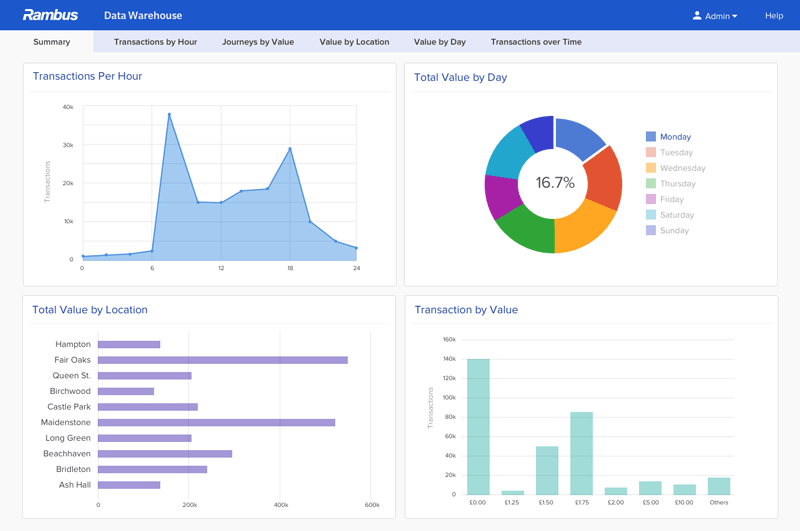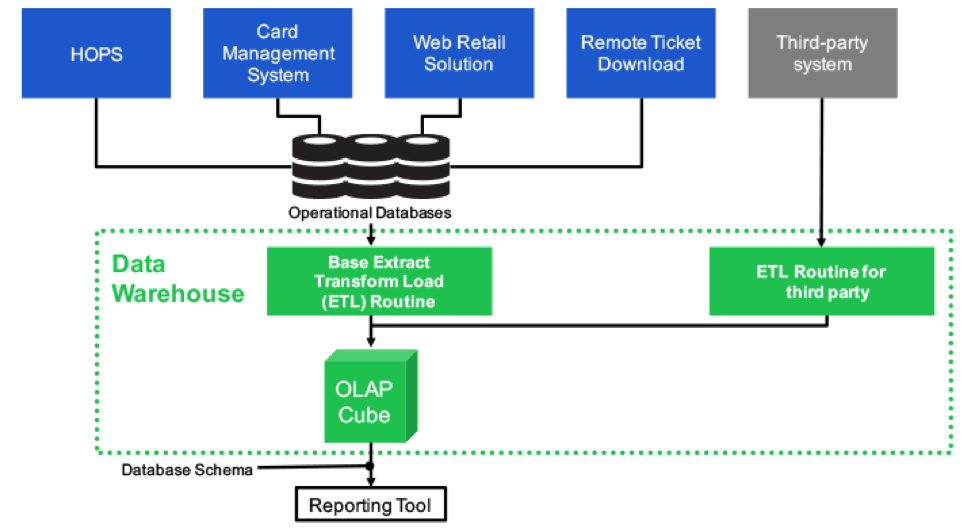Rambus Data Warehouse
The Rambus Data Warehouse allows operators to unlock the full value of data generated by smart transport schemes. Essentially, information is collected in a single, central database where trends in passenger travel, patterns of purchase and usage can be easily analyzed and displayed across multiple dashboards and reports.

Insights gleaned from smart ticketing data enable operators to improve cost-effectiveness and operational efficiency by providing real-world knowledge of when peak demand starts and stops, which customers are using different services and what services are overused. Operators can then more effectively manage station traffic during periods of busy congestion by sending live updates to customer phones, or incentivize riders to choose alternative routes via promotional offers. Similarly, information from the Rambus Data Warehouse can be used to more precisely tailor marketing campaigns for maximum impact while enhancing the overall customer experience.

As is illustrated in the image above, the Data Warehouse extracts information from multiple disparate operational databases and routes it through an Extract, Transform and Load (ETL) routine that converts the operational data into a useful form for analysis and aggregation.
The resulting data is then loaded into an OLAP cube, a specialized type of database optimized for performing large volume aggregation queries. A reporting tool chosen by the operator facilitates easy viewing of the data, slicing across the dimensions to efficiently analyze trends in depth and perform data discovery.
Smart travel with smart ticketing
As we’ve previously discussed on Rambus Press, ridership is significantly expanding in major cities, so transaction speed and customer satisfaction have become increasingly important for transport operators. This is precisely why various transport systems are steadily replacing paper tickets and tokens with smart cards and contactless payment cards, as well as mobile apps that allow passengers to use their smartphones to conveniently board buses, trains and ferries. Perhaps not surprisingly, there are currently multiple ‘smart’ options available for transport operators seeking to modernize their fare systems, including solutions based on barcodes, smart cards, EMV bank cards and HCE mobile apps.
For transport operators seeking to modernize their fare systems, HCE mobile ticketing solutions offer the same ‘shopper-friendly’ convenience passengers have come to expect from their smartphones in a transport environment by replacing yet another plastic smart card with a secure digital travel wallet.
With an HCE smart ticketing solution, passengers are freed from queuing for tickets, looking after and managing physical cards or concerning themselves with having the correct change to travel. HCE also allows passengers to top-up value, purchase and load tickets and view the contents of their HCE wallet, which can be accessed even if a smartphone is offline.
Interested in learning more about smart ticketing? You can visit our product page and download the eBook below.

